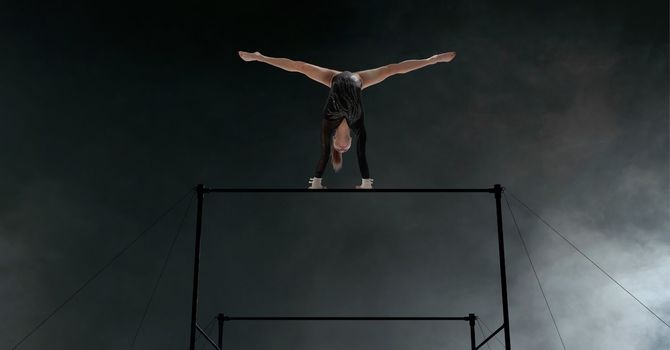
Ever feel like your pickleball performance hits a wall? Like your shots start crisp but deteriorate over time? Here’s the hard truth: playing more pickleball might not be the answer. Your body isn’t built for the demands of the game—yet.
What you need isn’t more court time. You need cross-training—done the right way.
Pickleball is a power-endurance sport that requires quick bursts, rotational strength, and joint mobility. If you’re not actively training for these demands, you’re leaving performance on the table—and setting yourself up for injury.
That’s where a sports rehab approach changes the game. Dynamic Neuromuscular Stabilization (DNS) can help retrain your movement patterns, making you more efficient and injury-resistant. Functional Range Conditioning (FRC) will bulletproof your joints, improving mobility and strength where it matters most.
Why Pickleball Players Need Cross-Training
Pickleball is fun—until it wrecks your body. Overuse injuries (think: tennis elbow, knee pain, shoulder impingements) are common because players don’t train their bodies to handle the sport’s unique demands. Cross-training isn’t about random workouts; it’s about targeted movement to enhance performance and reduce breakdowns.
Here’s the deal:
- More strength = more power behind your shots.
- More endurance = consistency deep into matches.
- More mobility = better reach and fewer injuries.
- Better reflexes = quicker reactions and a competitive edge.
Pickleball-specific cross-training should enhance movement patterns, not just muscle size or raw endurance. This is where DNS and FRC principles give you the biggest bang for your buck.
The 5 Essential Cross-Training Areas for Pickleball
If you want to move better, react faster, and stay pain-free, your training needs to hit these five key areas:
- Cardio Endurance – Build an engine that lasts.
- Strength Training – Generate more power with every shot.
- Mobility & Joint Health – Prevent injuries before they happen.
- Agility & Quickness – Improve court movement and reaction time.
- Neuromuscular Control – Train your brain and body to move efficiently.
Let’s break each one down.
Exercise 1: Cardiovascular Endurance (But Smarter)
Not all cardio is created equal. Pickleball requires short bursts of explosive energy, not marathon-level endurance. Your training should reflect that.
- Best Options: Sprint intervals, cycling, rowing, or battle ropes.
- How to Train It: Do short, intense efforts (15-30 seconds) followed by active recovery (walking or slow pedaling). This mimics the start-stop nature of a match.
Pro Tip: Rowing is a great low-impact option that builds endurance and core control without pounding your joints.
Exercise 2: Strength Training (Built for Performance)
Forget “bodybuilding” workouts. You need functional, sport-specific strength. That means rotational power, lower-body explosiveness, and shoulder stability.
- Lower Body: Squats, lunges, and lateral bounds.
- Upper Body: Pull-ups, push-ups, and resistance band shoulder drills.
- Core: Medicine ball slams, Pallof presses, and DNS breathing drills to reinforce stability.
FRC Hack: Add isometric holds at end ranges (e.g., paused lunges, deep squats) to build control and resilience in your joints.
Exercise 3: Mobility & Joint Health (Stop Ignoring This)
Most players only think about mobility after they get injured. Huge mistake. If you’re stiff or unstable, you’ll leak power and increase injury risk.
- Hips: Controlled articular rotations (CARs) to improve mobility.
- Shoulders: Resistance band external rotations to bulletproof your rotator cuff.
- Spine: Thoracic rotations to unlock better reach and swing power.
DNS Insight: Your core stability dictates your mobility. If your core isn’t strong, your body compensates with stiffness elsewhere.
Exercise 4: Agility & Quickness (Get to the Ball Faster)
Pickleball is won with your feet. If you can’t get to the ball fast enough, your technique doesn’t matter.
- Speed Ladder Drills: Improves foot speed and reaction time.
- Cone Drills: Mimics real court movement.
- Plyometrics: Lateral bounds train explosive side-to-side movement.
Rehab Focus: If you’ve had ankle sprains or knee pain, retrain your stability with single-leg drills and balance exercises.
Exercise 5: Neuromuscular Control (The Secret Weapon)
Speed is one thing—reaction time is another. Training your brain-body connection helps you anticipate shots and move instinctively.
- Ball Drop Drills: React to a ball being dropped and catch it before the second bounce.
- Partner Mirror Drills: Follow a partner’s unpredictable movements.
- DNS Rolling Patterns: Reconnects your brain to efficient movement patterns.
Why This Works: Your nervous system dictates how fast and efficiently you move. Train it like a skill.
How to Structure Your Cross-Training Plan
The goal? Enhance your game without burning out. Here’s how:
Weekly Training Schedule Example:
- Monday: Sprint intervals + medicine ball work
- Tuesday: Strength training (lower body focus) + mobility work
- Wednesday: Pickleball drills + agility work
- Thursday: Strength training (upper body focus) + reaction drills
- Friday: Active recovery (yoga, FRC mobility) + dinking drills
- Saturday: Pickleball match play
- Sunday: Rest or light movement
Train Smarter, Play Longer
Cross-training isn’t about doing random workouts. It’s about building a body that performs under pressure and lasts for years.
If you’re serious about taking your game to the next level—and avoiding injuries that knock you off the court—start incorporating these principles today.
.jpg)

.jpg)



